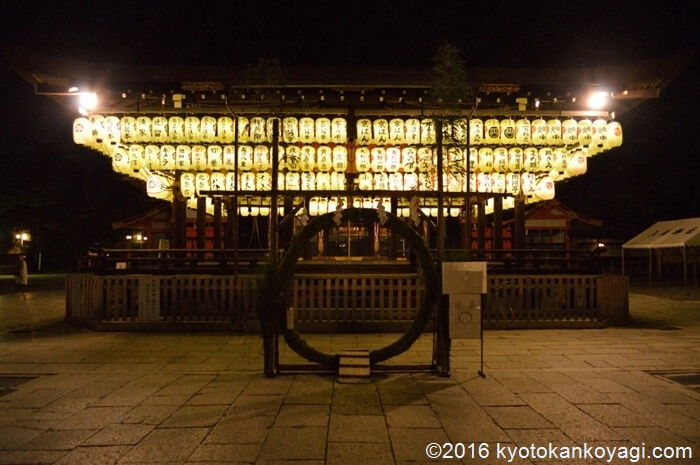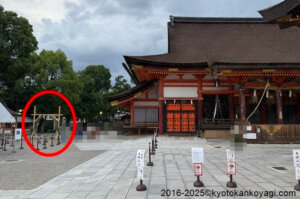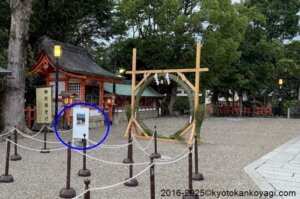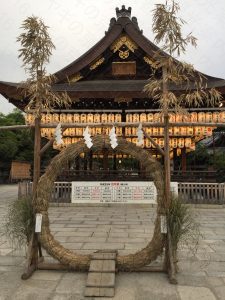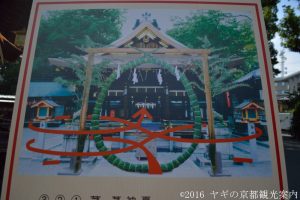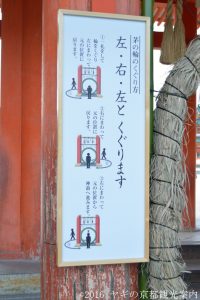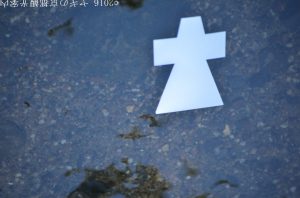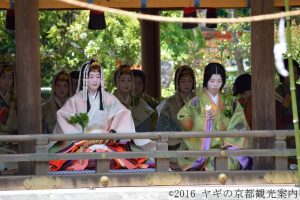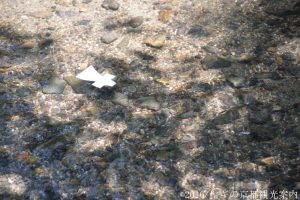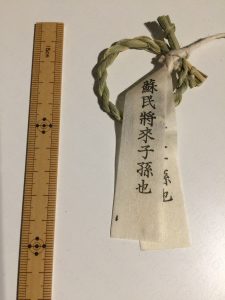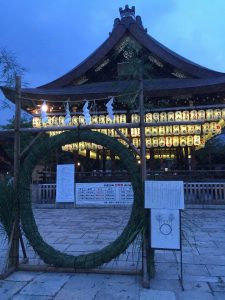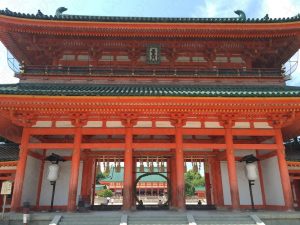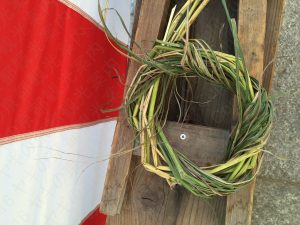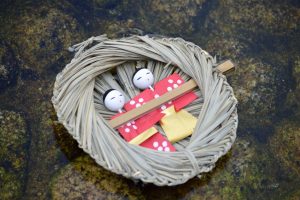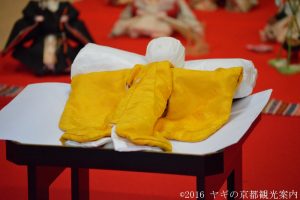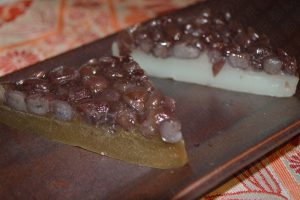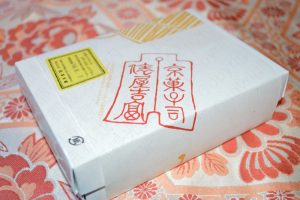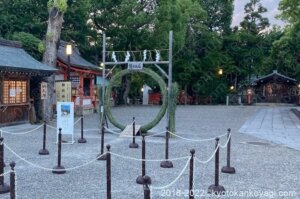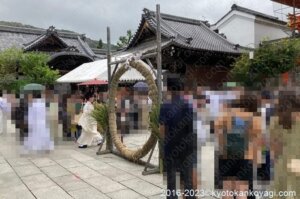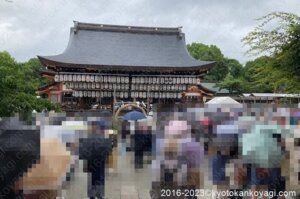Breaking:2025年6月最新情報
Now the Chinowa of 2025 is found next to the main hall (Red circle).
The picture in the blue circle indicates the way to do Chinowa Kuguri. The Chinowa will be located in front of Buden on 6/30.
Chinowa Kuguri at Yasaka shrine
In last week of June, we find a huge wreath at many Shinto shrines and Buddhist temples. Yasaka shrine is no exception. The wreath is called Chinowa. Kyotoites love to walk through it on 30th June. Walking through Chinowa is called “Chinowa Kuguri.”
At Yasaka shrine, after Chinowa Kuguri, we write down our names on a human-shaped pieces of paper called Hitogata and give them to the shrine and priest throw them to the Kamo river.
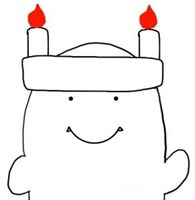
Nagoshi no Harae is a ritual to get rid of Tsumi and Kegare, espacially Tsumi. It is base on a story in Japanese mythology. Susanoh no Mikoto, the deity enshrined in Yasaka shrine, was ousted from Takamagahara because he violated social norms. When he left Takamagahara, he gave up the things belonged to him for the purpose of making up for what he had done and made Harae.
How to walk through “Chinowa” 茅の輪
Chinowa is located at Torii gate or in front of main hall of shrine. At Yasaka shrine, we can find it the West area of the shirne in last week of June and it is moved in front of the main hall on 6/30. (Actually, there is Buden, the building that has many paper lanterns, between the Chinowa and the main hall.)
We pass through the Chinowa in the way the red arrow indicates in the photo.
We pass through it three times. Every time we stand in front of it, we bow.
The first time, we say “水無月の 夏越の祓する人は 千歳のいのちのぶというなり, or Minatsuki no Nahoshinoharae suru hito wa chitose no inoti nobuto iunari.” It means “People who did Nagoshino harae (A ritual. We discuss about it later.) gain 1000 years of life.”
The second time, “思うこと みなつきねとて 麻の葉を きりにきりにきりても 祓いつるかな, or Omoukoto minatsukinetote asanohawo kirini kiritemo harai tsurukana.” This is poem composed by a famous poet named Izumi Shikibu in the heian period.It means “GO AWAY the things bother me!” (It is hard to translate it because it needs some knowledge on the ancient Japanese language and the common sense at the time.)
The third time, “蘇民将来。蘇民将来, or Somin Shorai, Somin Shorai!” Somin Shorai is a name of a man. We discuss about him later.

Chinawa Kuguri is base on this story. Check out the link.

A piece of paper called “Hitogata” 人形
A piece of paper cut off in a human shape. It is called “Hitogata.”
We rub ourselves with Hitogata.
And we breath on it.
We do these things for the purpose of putting evil things inside of us on it.
After that, we throw it to a stream on behalf of us. (The ladies in the photo are on a bridge with a roof.) The photo is of a ritual. We do not throw it to a river. Priests and monks do on behalf of us.
If you are interested in Hitogata, check the video. It was a ritual called “Saioh Dai Gyokei no Gi,” a ritual held prior to Aoi matsuri festival.
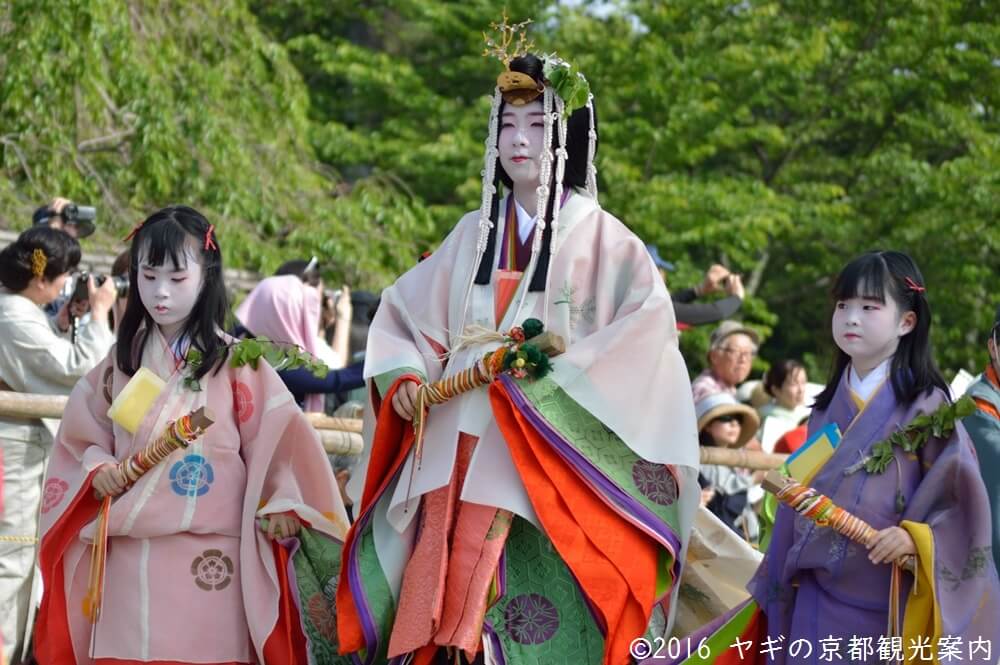
Nagoshino harae, Chinowa kuguri, and Hitogata 夏越の祓、茅の輪、並びに人形
What is Nagoshi no harae? 夏越の祓
In Japan, we believe we increase many Kegare and Tsumi in side of us.
Kegare is an anemic state of mind or evil things. Tsumi is a deed violates social norms. We get rid of them through a ritual called Oh Harae(大祓) two times a year. Nagoshi no Harae is a one took place in June.

Actually, we don’t tell them each other precisely. We just say, “Tsumi and Kegare.”
Basically, we remove Kegare and Tsumi in these rituals.
- Kegare-Misogi(禊)
- Tsumi-Harae(祓)
In Misogi, we wash ourselves with water. It is based on a story in Japanese mythology: When Izanagi escaped narrowly from Neno Kuni (land of the dead), he washed himself in a river. In the previous video, Saioh Dai touches a stream with her hands. It is an abbreviated way.
In Harae, priests helps us. they get rid of Tsumi with Sakaki plant (the priest has it in his hands)

In this video, he gets rid of Kegare (evilness) of the Mikoshi.
Whati is Chinowa? 茅の輪
Today, many Shinto shrines and Buddhist temples have Chinowa. This custom is based on an anecdote of “Somin Shorai.”
Once upon a time, Susanoh no Mikoto (He is a deity enshrined in Yasaka shrine.) asked for a bed to Kotan Shorai on his odyssey. Kotan denied it though he was a prosperous man. On the other hand, his brother Somin Shorai accept him though he suffered in poverty.
The next day, Susanoo no mikoto revealed he was Susanoh no Mikoto. He said “You and your descendants wear “Chinowa” wreath. I WILL save you and them from any maladies and epidemics.”
The Chinowa was enlarged to the big Chinowa we can find in shrines and temples today.
The Chinowa wreath in the photo is an amulet we can get in the Gion matsrui (July) at Yasaka shrine.
This is a Chinowa of Yasaka shrine. It appears around 6/24.
Some shrines and temples has it at the main gate. The gate in the photo is Otenmon gate in Heian Jingu shrine.
Nagoshi sai and Chinowa at Yasaka shrine 八坂神社の夏越祭と茅の輪
On 31th July, Nagoshi sai takes place at Eki jinjya shrine, a sub-shrine of Yaska Shrine and we can find Chinowa again there. Nagoshi sai is the last ritual held in Gion matsuri festival. We walk through Chinowa just one time and have Chigaya plant. We put together the plants and make a ring. We can have it as an amulet.
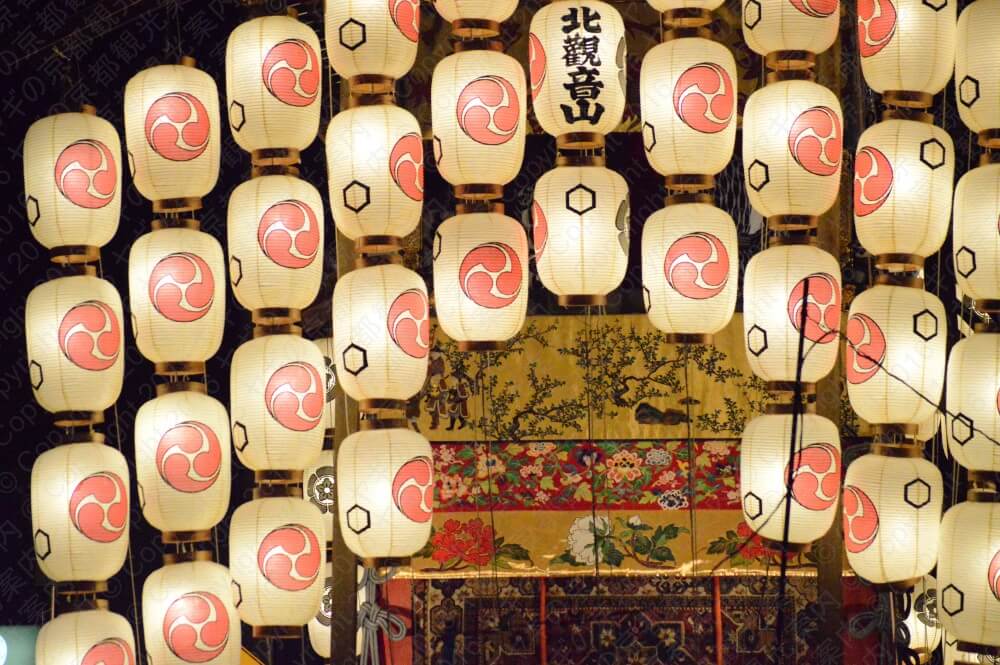
What is “Hitogata”? 人形
Hitogata is a kind of Katashiro, a substitute. In Onmyodo, we put evil things on a something human-shaped. They are on behalf of them. For example, We put evil things in young ladies on dolls and trow them in to river in Hinamatsuri festival.
I said when Susanoh no Mikoto left Takamagahara, he gave up the things belonged to him for the purpose of makin up for what he had done. These things are ‘Haraetsumono’ and Hitogata is a subustitute for it.
June in Kyoto
Minatsuki, the wagashi of June 水無月
In the ancient times, June is called “Minatsuki” and the imperial court gave ice they preserved to common people in June.
Today, we have wagashi named Minatsuki instead of ice. Take a look at the picture above. Azuki are on the green and white Uiro. Uiro is a cake made of rice flour and sugar. The green one is made with macha powder. Uiro means ice. Azuki is believed that it keeps us from bad luck.
Schedule 2025
Around 6/24
Every year, a brand-new Chinowa installed at Yasaka shrine. On 6/30, it will be moved in front of Buden and we can practice Chinowa kuguri in the direction to the main hall.
6/30

Oharae was carried on as usual. All the best, BAAAAH!!!!!! 皆様のご健康とご多幸を祈念申し上げます。合掌
Chinowa Kuguri is also available at Sakimatsuri (Yamabushi Yama Kaisho) , Atomatsuri (En no Gyojya Yama), and Eki Jinja Nagoshisai (in Japanese).

